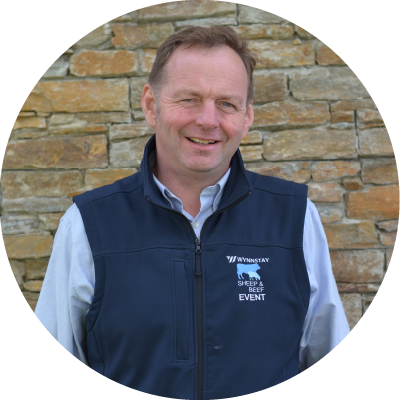Farmers are being advised to get ewes in the correct condition ahead of tupping to avoid a second year of poor scanning rates.
It was widely reported that scanning rates were back 15-20% on some farms in 2022/23 because the drought-affected feed availability pre-tupping, this could happen again this year and farmers must plan ahead.
If ewes are not in the correct body condition score (BCS), lambs should be weaned early (see Table below)
Read our guide on how to body condition score ewes, click here.
Targets for condition scoring sheep
| Time | Hill Ewes | Upland Ewes | Lowland Ewes |
| 8 weeks post-lambing | 2 | 2 - 2.5 | 2.5 - 3 |
| Weaning | 2 | 2 | 2.5 |
| Tupping | 2.5 | 3 | 3.5 |
| Scanning | 2 | 2.5 | 3+ |
| Lambing | 2 | 2.5 | 3+ |
To allow time for ewes to return to the ideal condition, ewe body condition should be assessed at weaning. When doing so, it’s important to ask yourself why they are thin – is it down to late lambing, poor health or grass availability? Once this has been agreed, take corrective action.
One BCS is 10-12% of body weight, for a 75kg ewe, this is 7.5kg. Ewes typically gain 300g/day so it will take at least 25 days for her to regain their condition. This requires very good grazing, so farmers will need to consider if they can achieve this or if ewes need supplementary feed.
Depending on their BCS, good grazing with flusher buckets are often enough to put ewes in good condition for tupping. If farmers are not creep-feeding lambs, I recommend weaning by 12 weeks (90 days) to avoid undermining ewe condition.
At 12 weeks, lambs are not getting any milk from the ewe and will be competing with ewes for grass, which will have a knock-on effect on ewe condition at weaning.
Why is BCS important?
A large study of 2,516 ewes carried out over three consecutive years in four New Zealand flocks found that lamb growth rates were significantly impacted by ewe BCS.
Ewes with high BCS that lost condition during rearing were using energy reserves to feed lambs which led the researchers to conclude that “adequate feeding is required to achieve high BCS at lambing.
Triplets were at the highest risk of low lamb growth compared to singles and doubles, which indicated that increased energy demands during gestation and rearing were insufficient.












